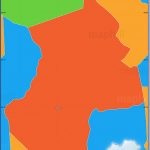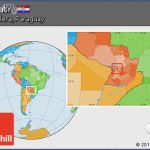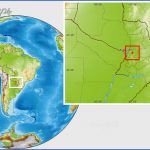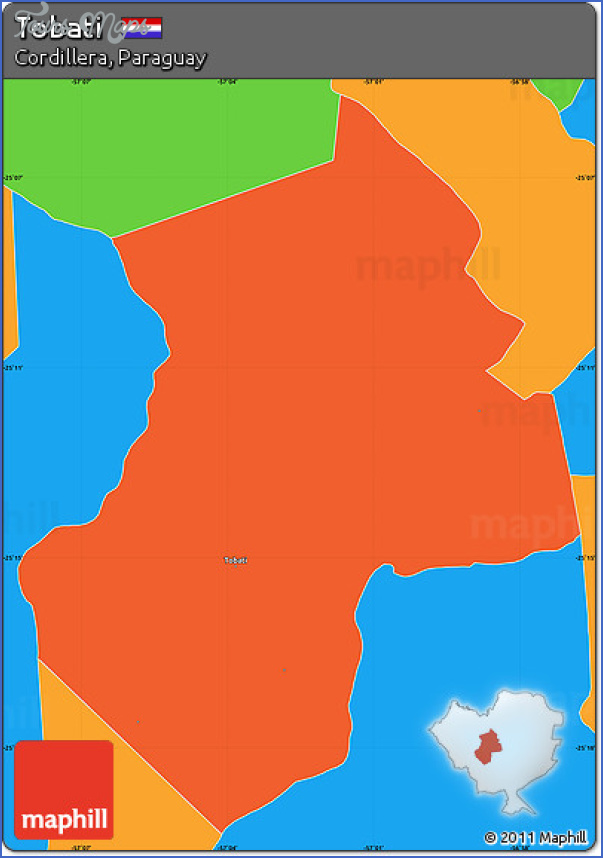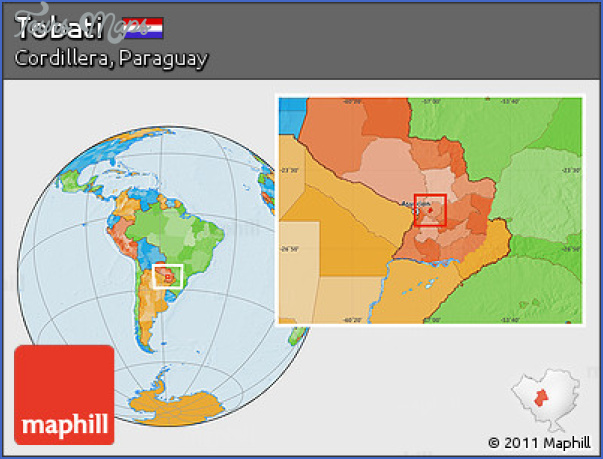Once a Franciscan mission today the small town of Tobati is well known for its ceramic work. This is both utilitarian and artistic in nature. The town is home to many small scale brick factories
known as olerias. The majority of these produce bricks by hand. The town’s decorative ceramics are mostly produced in the nearby compania of 21 de Julio. One of the main products Tobatenos make are water jugs or kambuchi in Guarani (see Kambuchi). However with the advent of running water demand for kambuchis has fallen and artisans have had to innovate, creating decorative objects instead. The town’s beautiful landscapes make it a great place to go exploring and there are some good places for rock climbing enthusiasts, as well as swimming holes and quaint communities tucked away in the vegetation. Tobati’s church, a legacy of the town’s roots as a Franciscan mission, houses the sister statue to the much venerated Virgen de Caacupe.
Brick Making
Throughout Tobati you will see people hard at work making bricks. First the clay is compressed with a mill known as a trapiche. Though it is often powered by an ox walking in circles, smaller outfits will simply turn the trapiche by hand. Once ready the thick black clay is slapped into wooden molds which hold four bricks each. These are allowed to dry in the sun before the bricks are knocked out. The still damp bricks are then arranged in MC Escher-like zig zag patterns and allowed to dry fully. Once enough dried bricks have been amassed a wood fire is lit in a large oven (itself made of bricks) and the bricks are baked, turning a pale orange in the process. For all this work brick-makers can expect to receive between Gs. 500 and Gs. 700 per brick.
Mirador Tres Caras de Indios
Just before the entrance to town on the right-hand side is a large rock column jutting out of the ground. The base is decorated with three stone sculptures of indigenous faces and steps head to a lookout point up top. From there you can see brick factories of various sizes throughout the area.
Villa Artesanal
Though removed from town, the Villa Artesanal, an activities center for the area’s artisans, is worth the visit. Items by local artists are on sale throughout the year, though the best time to go is during the yearly Expo Tobati (see the following section). The Villa Artesanal is run by Fundacion Tobati, an NGO focused on improving the life of local artisans. Educational workshops are frequently held and housing is provided free of charge for several artisans in the Villa Artesanal and in surrounding neighborhoods. Tel: 0516 262 162, follow the signed turn off for Fundacion Tobati on the left-hand side of the road into town just after the gas station, the center is on the right-hand side of the road approximately 600 meters away, www.fundaciontobati.org.py, 8am-5pm Expo Tobati
Held every year in late October the Expo Tobati showcases artisans from Tobati as well as further afield. As with most town festivals the Expo Tobati includes performances by local music and dance troupes. Contact Fundacion Tobati for specific dates.
Don Zenon Paez’s Workshop
In addition to ceramic artists Tobati is home to Don Zenon Paez, a renowned Paraguayan wood carver. Though most of Sr. Paez’s work is religious in nature he is also known for his other carvings. The carreta aza prima features a peasant in a wagon (carreta) pulled by several oxen which is transporting a large felled tree trunk. This scene still takes place throughout the country although in large part the wagons have been replaced by trucks. His most intriguing and labor intensive piece is the Triple Alliance War themed chess set. The darker figures (usually carved from palo santo) represent the Brazilian, Argentine and Uruguayan forces of Triple Alliance, complete with sinking battle ships as towers, and the emperors of Brazil as the king and queen. Mariscal Lopez and Madame
Lynch play king and queen on the Paraguayan side and the ruins of Humaita are towers. Paraguay’s pawns, all carved out of white guatambu wood are represented by the men, women and children soldiers. This quirky chess set takes weeks to complete and sells for several hundred dollars. To see more of Zenon Paez’s work ask to visit the recently opened Museo Zenon Paez down the block. Tel: 0516 22 29, 0516 262020,0516 262 160, Mariscal Lopez and Pedro Juan Caballero 1177, www.zenonpaez.com, the workshop is on the left-hand side of the main road entering town Outdoor Activities
The hills of Tobati offer outdoor enthusiasts a chance to do some rock climbing – a sport which few Paraguayans partake in. The San Bernardino based adventure tourism company Aventura Xtrema (see Aventura Xtrema) offers a full day tour of Tobati which includes trekking, cave exploration and rappelling (note: this tour requires at least four people and a reservation two days prior is recommended).
American ex-pat Dale Helms has been leading rock climbing groups in the Tobati area for several years. Dale and other climbing enthusiasts have bolted paths up Tobati’s Ita Pora formation and spent time exploring the area’s beautiful landscapes. They usually go every Saturday, often joined by Peace Corps volunteers that make for fun and knowledgeable company. Tel: 0981 568 570
Getting There
The turn off to Tobati is located in downtown Caacupe. If coming from Asuncion you will have to follow Route 2 as it veers right and curves around town. To your left there will be a long stretch of grass in a park after which there is a left-hand curve in the road which allows you to double back onto Route 2 in the opposite direction taking you back through Caacupe. Continue about six blocks and take a right on to Juan O’Leary and then take the second right which will lead you all the way to Tobati. From points east of Caacupe simply look for the right-hand turn off on Juan O’Leary as you begin to enter the center of town (if you pass the plaza and Basilica on your left you’ve gone too far).
The Villa Serrana bus line (buses say Tobati across the front) leaves from Asuncion’s bus terminal and the trip takes approximately two hours, Gs. 7,700. You can also take any bus heading down Route 2 past Caacupe (grab a long distance bus headed to Ciudad del Este for the nicest ride), get off at the Nuevo Super 2 supermarket just before Caacupe (a popular bus stop) and then catch the Villa Serrana or Arroyos y Esteros bus from there, Gs. 3,000. There is a man at the bus stop in front of the Nuevo Super 2 who flags down buses for all passengers – simply tell him where you’re headed. Another option is to take a bus to Caacupe and then hire a taxi to drive to Tobati. Specify you will need a ride back and be sure the quoted fare includes wait time.
Kambuchi
Many houses and businesses in the countryside have a large round clay water jug in the corner, usually covered with a plate and a glass. This is known as a kambuchi in Guarani and a cantaro in Spanish. In towns without running water women can still be seen returning purposefully from the river or creek carefully balancing water-filled kambuchi atop their heads. Though mostly used for water kambuchi are also used to keep clerico cool during holiday festivities. Some choose to keep their kambuchi on the floor while others have tables with holes cut out specifically to fit the kambuchi. Metal kambuchi holders are also popular and the more pragmatic choose to keep their kambuchi wedged into the nook of a low tree branch or trunk.
South to Paraguari Along the Ruta Paraguari-Piribebuy
One of the few roads that connects Route 1 and Route 2, the scenic Ruta Paraguari-Piribebuy(formally named the Ruta General Rogelio Benitez) makes for a beautiful and pleasant drive. From Route 2 the landscape dips down along a series of rolling hills that keep the temperatures cool. Along the way you will see several large farms as well as the factories where cana Fortm and local soda Gaseosa Piri are produced. Entering Piribebuy you will pass the San Blas oratory which draws pilgrims from several nearby towns each Feb. 2nd (see Fiesta de San Blas). Past Piribebuy the road climbs slowly but surely through smaller, more rural communities. Children play in fields and cows wander slowly along the side of the road. At the top of a hill to the right is the small Oratorio San Rafael sitting atop an enormous tree covered boulder. The road is dotted with stands selling stone grottos of various sizes for housing statues of saints. A bit further is the right-hand turn off for the Chololo swimming hole. As the road climbs the Cerro Mbatovf it begins to wind through the growing vegetation. Fortunately there are a couple small lookout points to the right from which you can admire the picturesque view and catch a cool breeze. Once descended the road flattens again and leads to Paraguari where it connects to Route 1. If you are in a private vehicle note there is very little transit on this road so take it slow and enjoy the ride. Unfortunately buses that run the entire road are few and far between. If headed past Chololo in either direction your best bet is to take a taxi from Piribebuy or Paraguari. Getting from one end to the other on public transportation requires some flexibility and multiple buses. The Empresa Piribebuy has buses that go from Asuncion through Piribebuy as far as Chololo. From there a separate Empresa Piribebuy bus heads to Paraguari. Empresa Piribebuy has one bus that comes from Ciudad del Este between 8:30 and 10am, stops in Piribebuy and connects to route 1 though Paraguari before heading to Carapegua. However this bus can be very elusive so it is best to confirm its itinerary with the bus company (Tel: 0515 212 164).
Tobati Map Paraguay Photo Gallery
Maybe You Like Them Too
- The Best Cities To Visit in The World
- World’s 10 Best Places To Visit
- Coolest Countries in the World to Visit
- Travel to Santorini, Greece
- Map of Barbados – Holiday in Barbados

